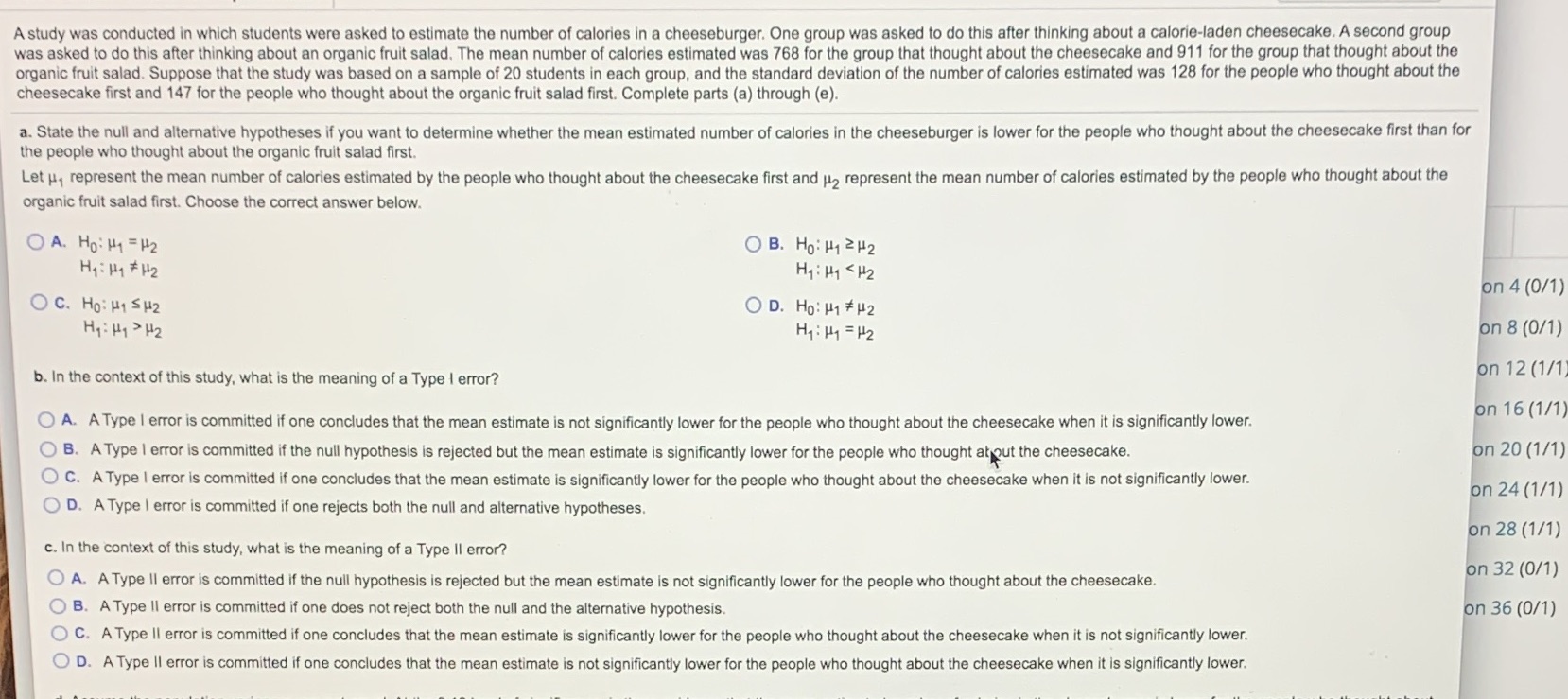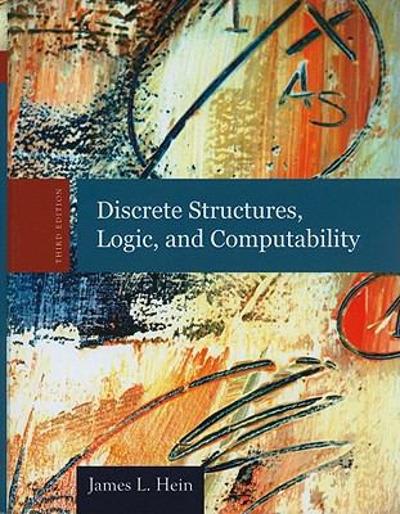Answered step by step
Verified Expert Solution
Question
1 Approved Answer
97 A study was conducted in which students were asked to estimate the number of calories in a cheeseburger. One group was asked to do
97

H2 H1: H1 = H2 on 8 (0/1) b. In the context of this study, what is the meaning of a Type I error? on 12 (1/1 on 16 (1/1) O A. A Type I error is committed if one concludes that the mean estimate is not significantly lower for the people who thought about the cheesecake when it is significantly lower. O B. A Type I error is committed if the null hypothesis is rejected but the mean estimate is significantly lower for the people who thought about the cheesecake. on 20 (1/1) O C. A Type I error is committed if one concludes that the mean estimate is significantly lower for the people who thought about the cheesecake when it is not significantly lower. on 24 (1/1) O D. A Type I error is committed if one rejects both the null and alternative hypotheses. on 28 (1/1) c. In the context of this study, what is the meaning of a Type II error? O A. A Type II error is committed if the null hypothesis is rejected but the mean estimate is not significantly lower for the people who thought about the cheesecake. on 32 (0/1) O B. A Type II error is committed if one does not reject both the null and the alternative hypothesis. on 36 (0/1) O C. A Type II error is committed if one concludes that the mean estimate is significantly lower for the people who thought about the cheesecake when it is not significantly lower. D. A Type II error is committed if one concludes that the mean estimate is not significantly lower for the people who thought about the cheesecake when it is significantly lower
Step by Step Solution
There are 3 Steps involved in it
Step: 1

Get Instant Access to Expert-Tailored Solutions
See step-by-step solutions with expert insights and AI powered tools for academic success
Step: 2

Step: 3

Ace Your Homework with AI
Get the answers you need in no time with our AI-driven, step-by-step assistance
Get Started


